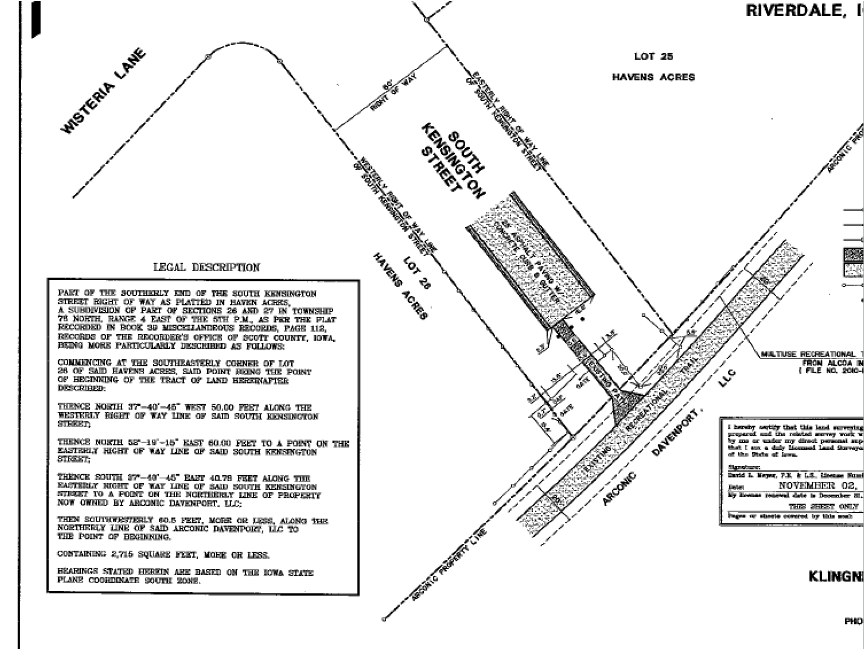by Hannah Dankbar and Gary Taylor
Letica Land Company, LLC v Anaconda-Deer Lodge County
Montana Supreme Court, November 17, 2015
Letica Land Company (Letica) and Don McGee appeal a lower court’s ruling that two stretches of a road crossing their properties in Anaconda-Deer Lodge County are public roads.
Modesty Creek Road was established as a county road by the County Commission in 1889. The land across which the road traverses has been owned by the federal government, Anaconda Company, various private interests and most recently Letica and McGee who purchased the land in 1989 and 1997 respectively. Prior to Letica and McGee purchasing the land locked gates were placed on various places in the road that blocked public access, even though the public continued to access the road on a permissive basis. Because of these gates Letica and McGee claim that they were unaware of any public right of access of Modesty Creek Road.
In 2012 county residents asked the County Commission to reaffirm the road as a county road and reopen it to the public. The County Commission voted in approval and Letica filed a complaint. The complaint was denied and McGee joined as a plaintiff to amend the complaint.
The trial court concluded that Modesty Creek Road’s lower branch was a statutorily created road, and that Modesty Creek Road’s upper branch was established as a public road via public prescriptive easement, and that the prescriptive easement had not been terminated by “reverse adverse possession.” The court also found the takings question was not ripe until after an appeal. Letica and McGee appealed, challenging both the declaration of a statutorily created road and the declaration of a public prescriptive easement.
Letica and McGee first claimed that the record does not sufficiently demonstrate that the road was created by petition. They claim that Modesty Creek Road is on some county road maps, but not on others. The court found that this does not qualify as “affirmative steps to indicate intention to abandon” county roads once they are established, further these maps do nothing to provide evidence of the process of how these roads were approved. Letica and McGee also claimed that the lower branch must terminate at the eastern portion of Section 23, Township 6 North, Range 11 West. There is no definitive description in the record of where the road ends, but evidence when taken as a whole, such as testimony and other historical records are consistent enough for the court to conclude that the Dry Gulch is located along Section 22, Township 6 North, Range 11 West and that the lower court correctly took the record as a whole. The lower court’s decision regarding the statutorily created lower branch of the road were affirmed.
Letica and McGee argued that the actions of landowners to block public access throughout the years created in the landowners ownership by adverse possession. The court emphasized that in Montana a “private individual may not obtain title to a public statutorily created road by a adverse possession.” Since it was established that the lower branch is a statutorily created road and therefore could not be claimed by adverse possession. This still left open the question of whether reverse adverse possession extinguished the public prescriptive easement on the upper branch.
Locked gates blocked public access to the upper branch from 1980 to 2012. The public who used to use the upper branch found alternate routes and County staff said they would have cut the locks if they were made aware of the issue as they did this in other instances. The record shows that the public “cooperated and adhered” to the permissive use policy. Those who leased land or had water rights along the road had keys to the gates.
After declaring the upper branch a county road in 2012 the County found that the landowners asserted hostile rights for thirty years. However, the court found that the public abandoned this road and the County was aware of the gates and did not remedy the situation. Montana statute provides that a prescriptive easement may be terminated “by disuse of the servitude by the owner of the servitude for the period prescribed for acquiring title by enjoyment.” The Court reversed the lower court’s ruling that the public prescriptive easement was not terminated by reverse adverse possession.
One justice dissented. Chief Justice McGrath concurred with the resolution of the first issue, and dissents the conclusion of the second issue. He would uphold the lower court’s decision and conclude that “this case would not exist but for the unlawful closure of the lower branch road….[A] person may not illegally block a road created by action of a public government entity, and then use that blockage as evidence to support a claim of reverse adverse possession that extinguishes the public’s prescriptive right to any other property or interest in property.”

